Close to home: The origins of Rice Road and the family of Frederick and Mary Rice
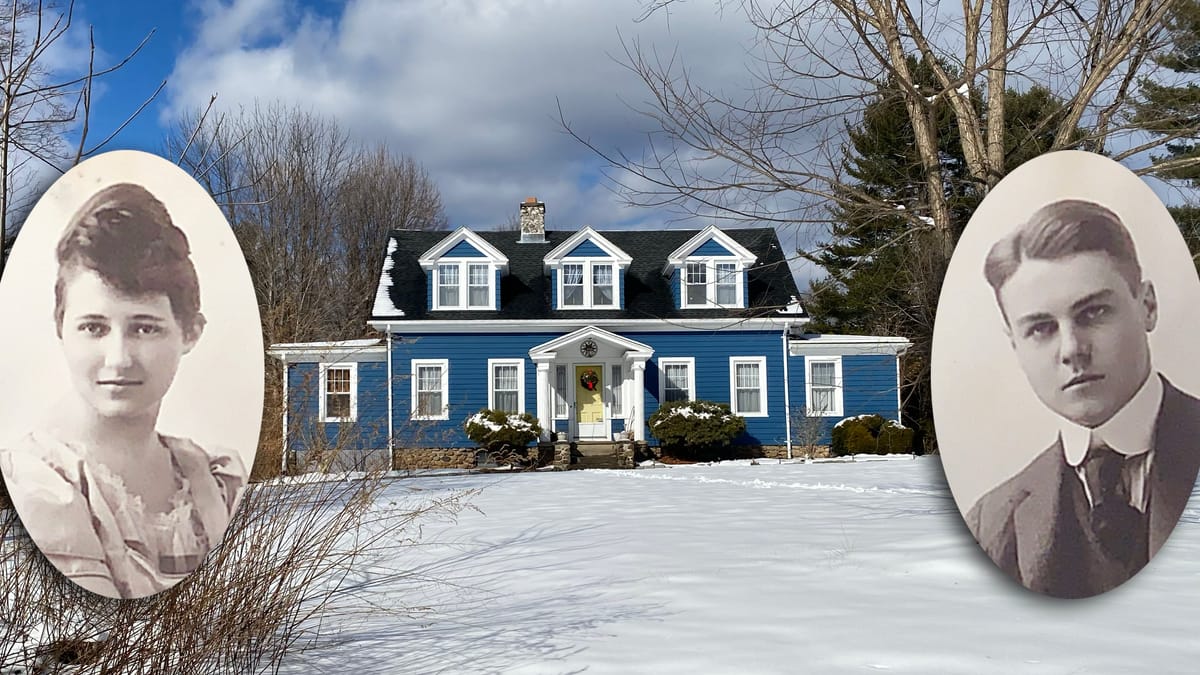
From time to time, a request arrives through the Amity & Woodbridge Historical Society’s website contact form from someone hoping to better understand some part of Woodbridge history. When inquiries about specific figures from the town’s past come in, I’m sometimes called upon as a resource to help piece together the stories that time has scattered. These questions frequently lead me down fascinating paths through old records, forgotten stories, and familiar surnames that still echo through our town.
You can read previous essays sparked by such inquiries here at TownHistory.org (When ‘That Great Sperry Family’ finds its way back to Woodbridge, Keepsakes and kin: Treasuring family stories for posterity, and Tracking down some Hotchkiss and Clark kinfolk in Woodbridge). Or, you can write to me with your own question — I'm always happy to help explore another chapter of our shared history. And perhaps a future story awaits!
In this week's essay, I’ll share some of the tools of the trade and the process of discovery that often unfolds — sometimes leading to unexpected finds along the way. I hope it encourages your own path to discovering bits and pieces of history.
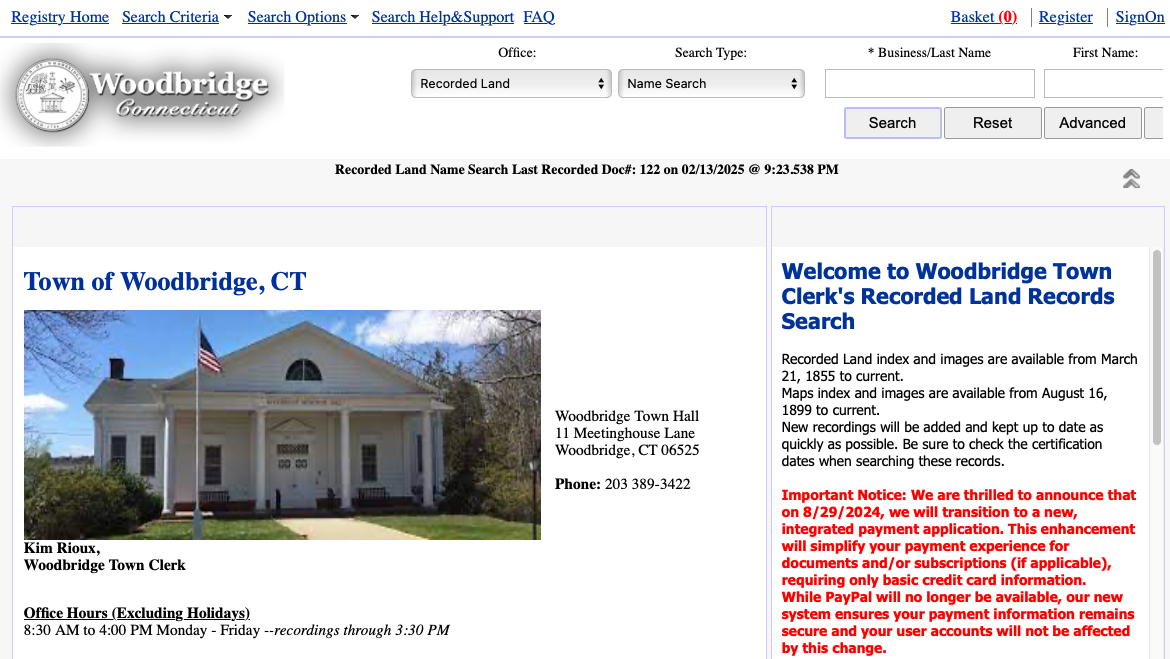
In genealogy research, the best approach is to start with what you know and work backward to uncover the past. If you're interested in learning more about the history of your own home or how your neighborhood was developed, for example, one valuable tool is the Woodbridge Land Records — which can be explored online (in addition to in-person if you're inclined to pay a visit to the Town Clerk's office on the lower level of Town Hall). Property records document the ownership of real estate and are required to be recorded by the Town Clerk. Each document is assigned a sequential identifying number, known as the book and page number, and then scanned into the registry system so the resulting images are available to search and view online. These records provide a wealth of information for tracing property history and genealogy in the town (if you need a certified copy of these records, these can be obtained for a fee from the Town Clerk).
To access Woodbridge Land Records online visit the U.S. Land Records online resource. Once there, select Connecticut from the list of states, choose Woodbridge from the list of towns, and follow the provided directions to search for land records by name, property address, or date. This tool offers a convenient way to examine historical deeds, property transfers, and other land-related documents essential for understanding the development and history of Woodbridge, CT.
When I searched for records related to my house, I found the previous owners listed, and then searching their records I was able to view the details of their own purchase of the property and so on, back to the records of the couple who built the house in 1929. They were Frederick William Rice (1874-1956) who was born in Cheshire and would later become a prominent business figure in New Haven. In 1896 he married Mary Louisa Reilly Rice (1877–1972) and the couple had two daughters, Jesse Evelyn Rice Huntley (1898–1985) and Esther M. Rice (1904–2001).
While replacing the roof on our house shortly after we purchased it in 1997, the workmen discovered some old framed photographs that had evidently slipped through the rafters to become lodged between the old roof and the interior attic space. What a wonderful discovery! Look whose photographs we have here, appearing none the worse for the decades they have spent in limbo, nestled protectively among the framework of the house they built:
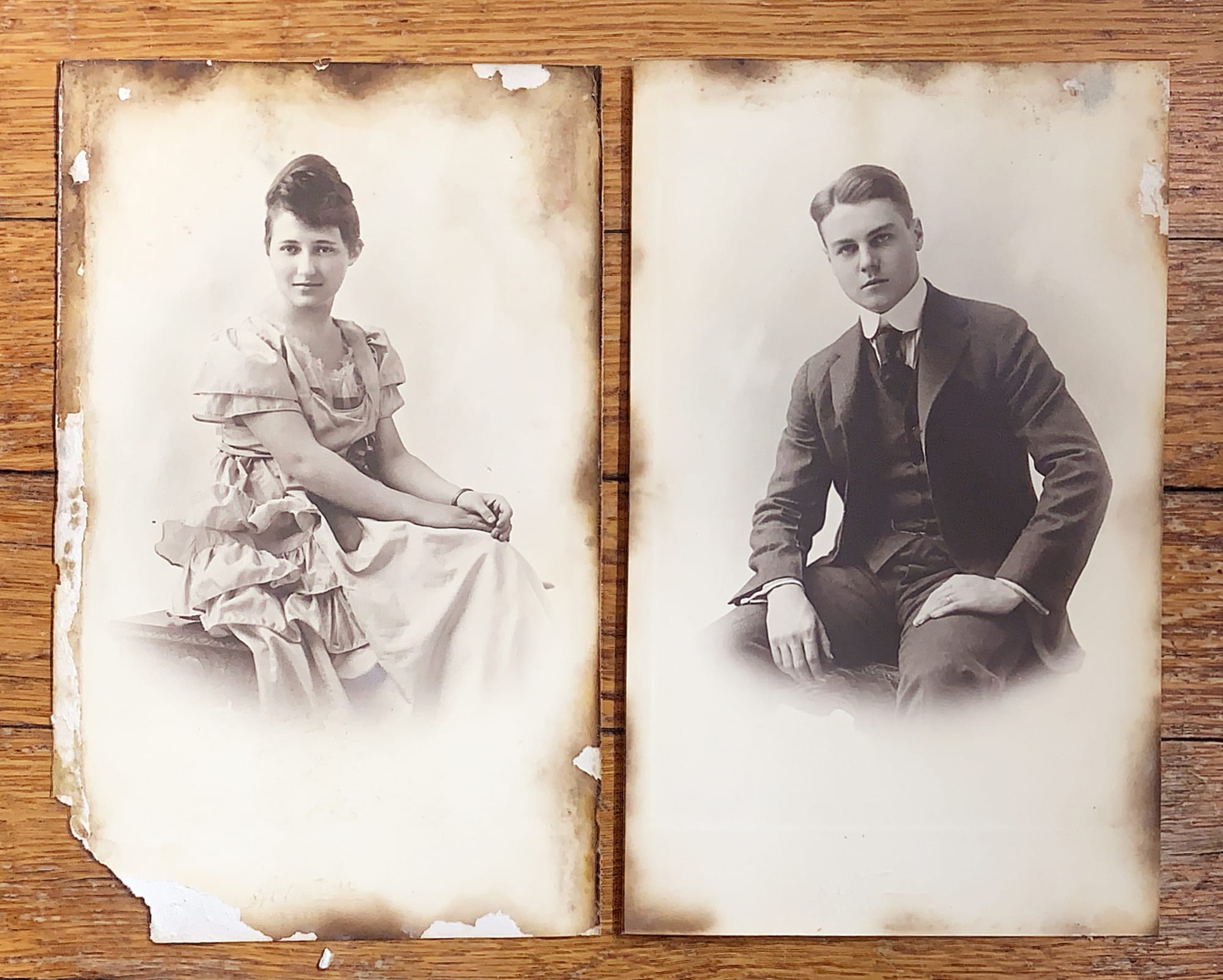
After living on Brownell Street in the Westville section of New Haven at the time of the 1910 census as next door neighbors to the Razee family, who later became their neighbors in Woodbridge, Frederick and Mary began to acquire several parcels of land in Woodbridge along what was then known as Center Street (the present Center Road) in the vicinity of North Pease Road. Eventually, Rice Road was established, providing a curved connection between Center and North Pease roads.
Another terrific resource to help us understand the topography of Woodbridge at this time are the 1934 aerial maps you can access online at the CT State Archive’s collection. In the image below, we can see that the Rice house has been constructed at the corner of Center and what will become Rice roads (submerged in a waterway in this image — this area is the headwaters of Race Brook). Further down Center Road at the intersection with North Pease the Razzee home is also visible. George Clarence Razee (1882-1969) and his wife Edith May Blakeslee (1884-1962) lived here, appearing as neighbors again to Frederick and Mary Rice in the 1930 census.
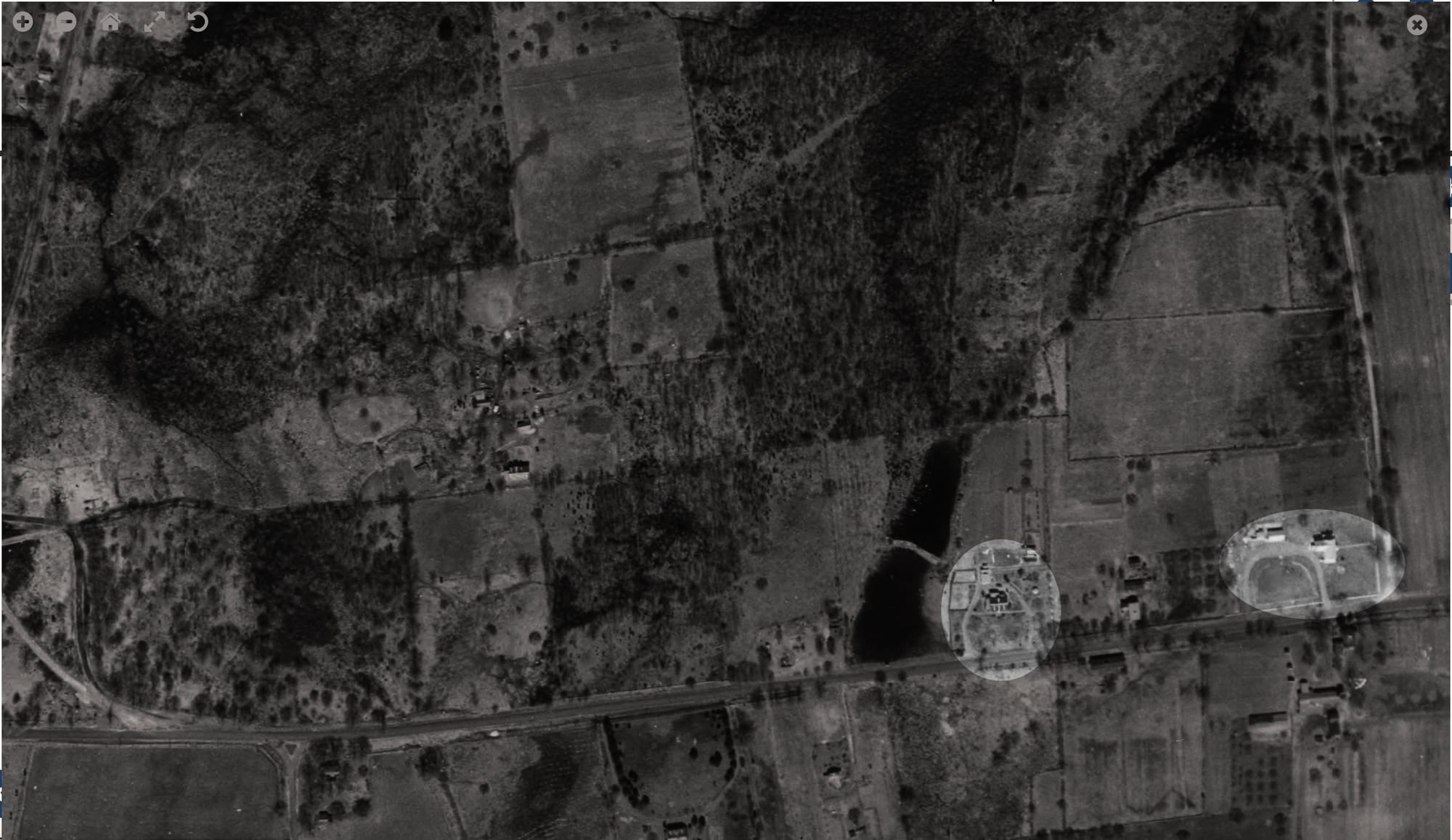
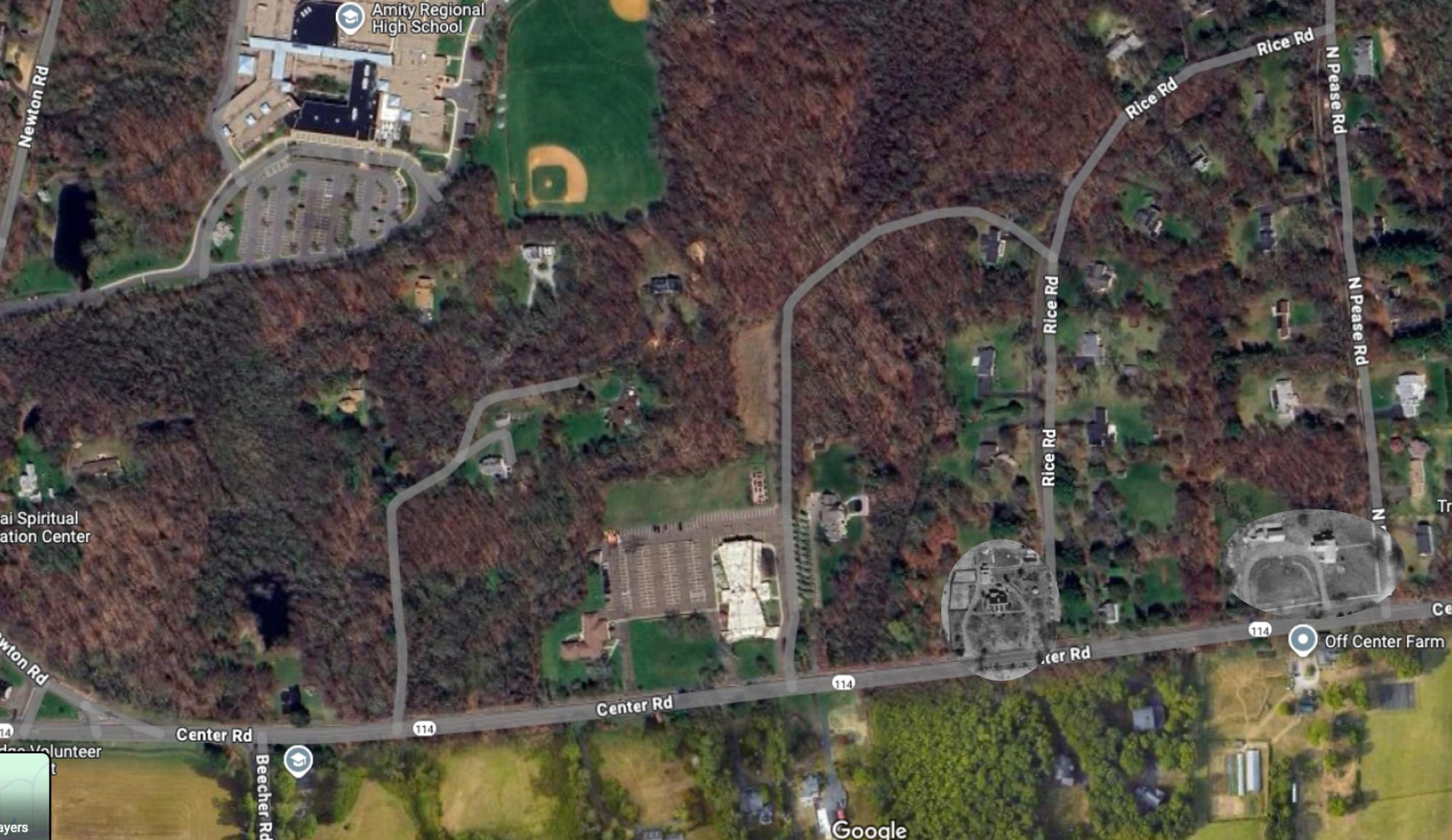
The 1934 aerial map of Woodbridge with the Rice and Razee houses circled; today's view from Google maps, with both 1934 house images inset.
The Rice family's earliest recorded purchase of land in Woodbridge was in 1922, when they bought an eight-acre parcel known as the Thomas Place from Elizabeth Kunz, the widow of Jacob Kunz whose first wife Margaret had died in a fire, possibly on this property, in 1878 (described in the essay, Flames, loss, and lessons: Fires that shaped Bethany and Woodbridge). In the land records for this transaction, the property is described as being located along Center Street, bordered by the lands of the grantor and Alice Clark Fitzgerald, the wife of David FitzGerald whose land holdings at this time also included the property that would later become the Town-owned FitzGerald Property (described in a previous essay).
After building their house in 1929, the Rice family further developed their land, eventually creating Rice Road, where a new residential area sprung up by the mid-1940s with the post-war housing boom underway. In 1944, the couple took part in a sale of a portion of property to Elizabeth M. Beecher and Christina K. Chatfield, which according to the land records was “known as Lots 1, 2, 3, 4, 5, 6, 7, 8, and 9 on a Map entitled ‘Property of Frederick W. Rice, S. Kelsey MacArthur, Ellsworth Mathias and William P. Beach,’ Woodbridge, Conn. Aug. 1944.” The land is described as abutting property owned by David and Alice Clark FitzGerald, and Charles E. Peck and Cora W. Rowe.
Then in 1946, Frederick and Mary sold another parcel of land to Robert E. Bamberg and Evelyn S. Bamberg of Hamden, with the property bounded by land of Alice Clark Fitzgerald, and their own holdings. This sale appears to be the last in a series of transactions that transformed this former farmland into the residential neighborhood it is today.
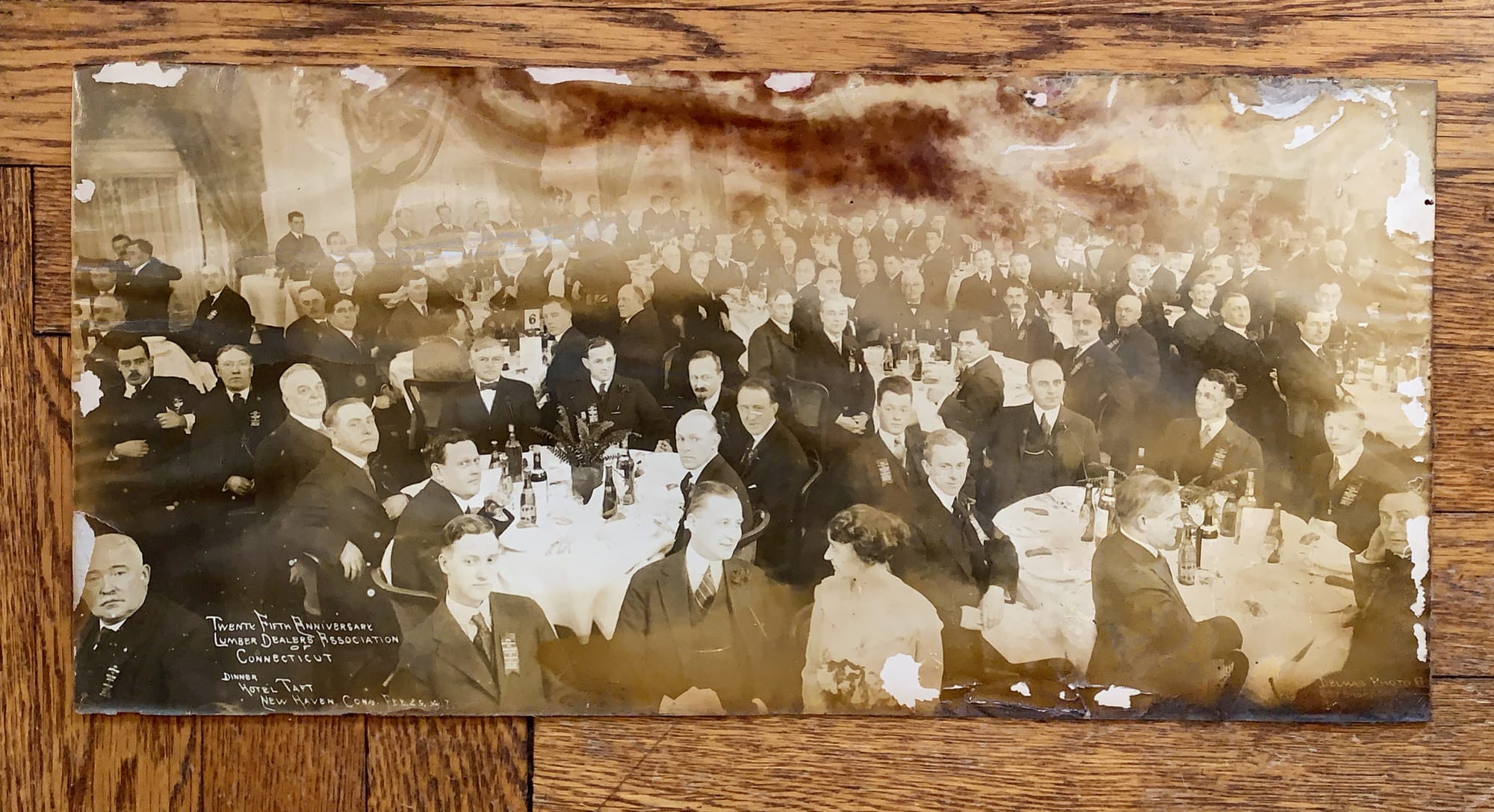
While they lived in Woodbridge, Frederick Rice was the President of the Lampson Lumber Company, one of the largest building materials firms in the New Haven area. The company, incorporated in 1902, was an outgrowth of the W.A. Beckley Company and was established on the former site of the Benedict Arnold House, which was demolished in 1900 to make way for its storage warehouse (read more at the Common Place website essay, Benedict Arnold’s House: The Making And Unmaking Of An American). Frederick became president of the company after the death of its first president, Louis Arthur Lampson, in 1935. Under Frederick’s leadership until his death in 1956, the company supplied building materials for significant projects, including Yale University’s campus expansion and the construction of the Yale Bowl in 1914.
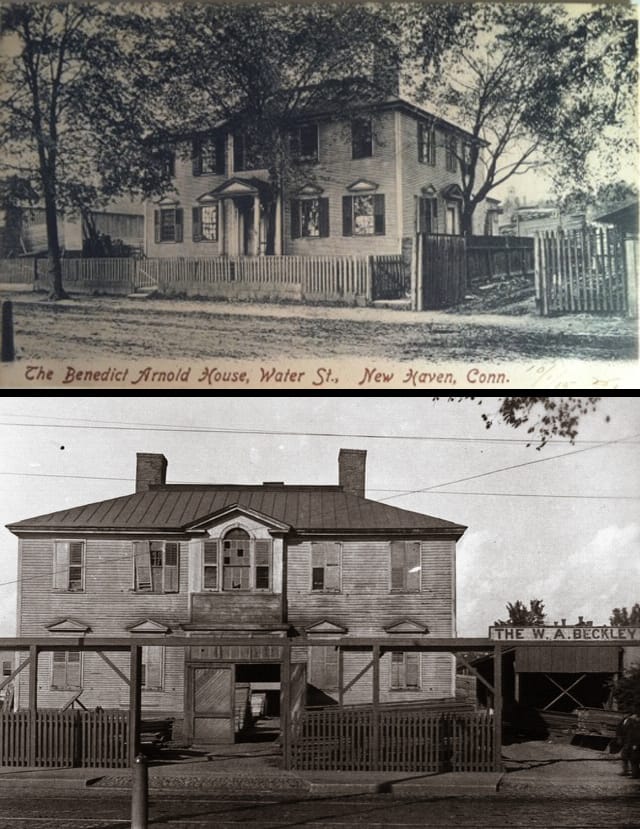
Frederick and Mary's daughter Jesse Evelyn also worked for her father’s company, first as a stenographer and later as a bookkeeper. She had been married briefly to Harold Elwood Mitchell Huntley and was raising their two children Frederick Elwood Huntley (1919-2014) and Carolyn Jane Huntley (1918-1937), residing with her parents in their Center Road home.
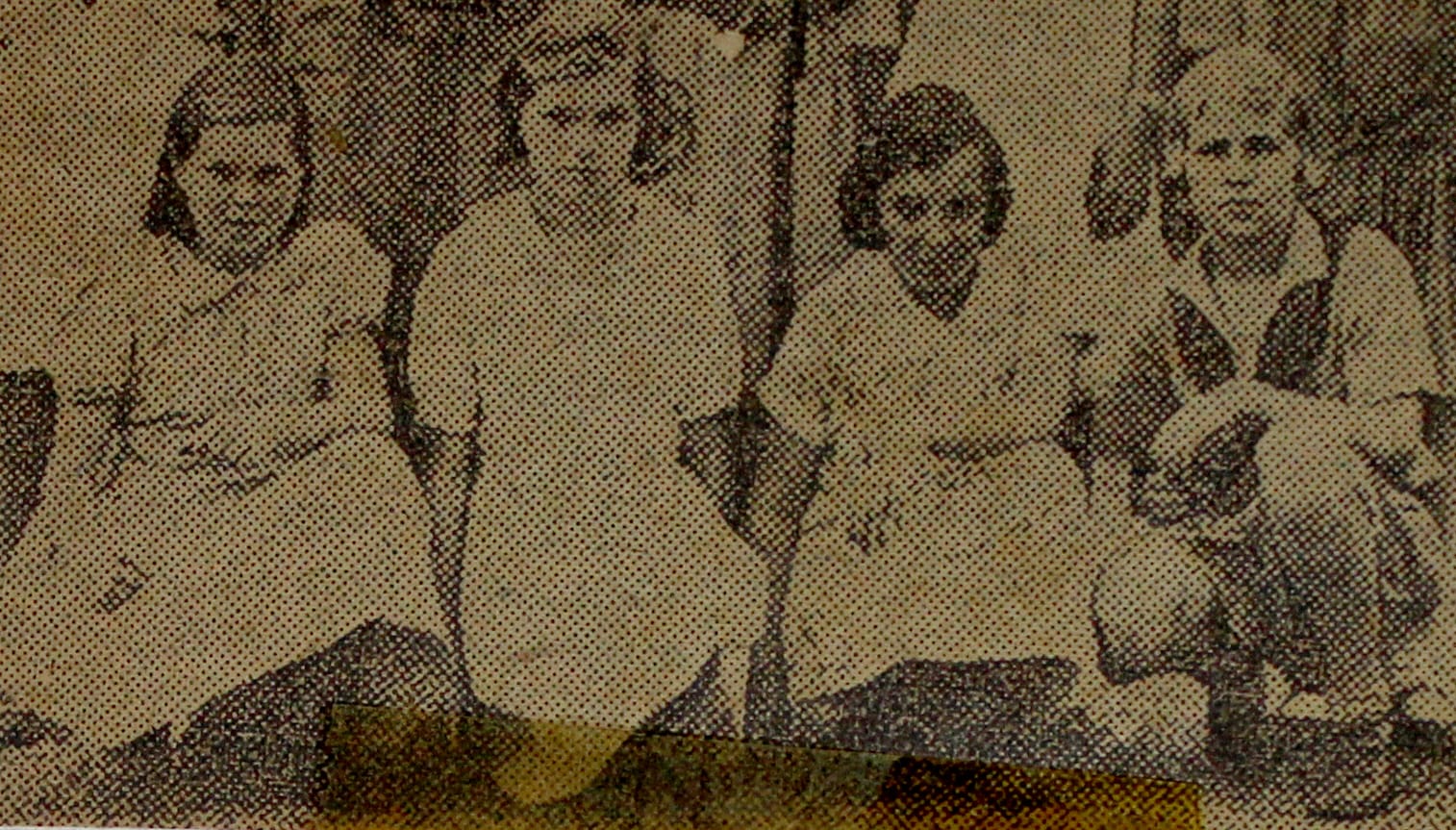
At about age 15, Frederick and Mary's granddaughter Carolyn was diagnosed with chronic valvular heart disease, a condition involving damage to or a defect in one of the heart valves, which led to progressive health decline. During this time medical advancements were limited, and treatment options were not as developed as they are today. Sadly, Carolyn succumbed to the disease just three weeks short of her 19th birthday in 1937.
There's a bit more to the story of the Rice family which we can discover by taking a step back to look at Frederick's family of origin. His brother Franklin James Rice (1869-1917), known as Frank, was a significant political figure in New Haven. He began his career in the grocery business at 18 and later became the superintendent of H.P. Ives & Company. Frank also worked as a trolley conductor before entering politics. He was elected as a Republican mayor of New Haven in 1909, winning by a narrow margin of 402 votes. During his tenure, he focused on urban development and community welfare, establishing playgrounds across the city, particularly in tenement districts, by 1915 — an initiative said to have provided affordable recreational spaces for children, costing just one cent per child per hour of play.
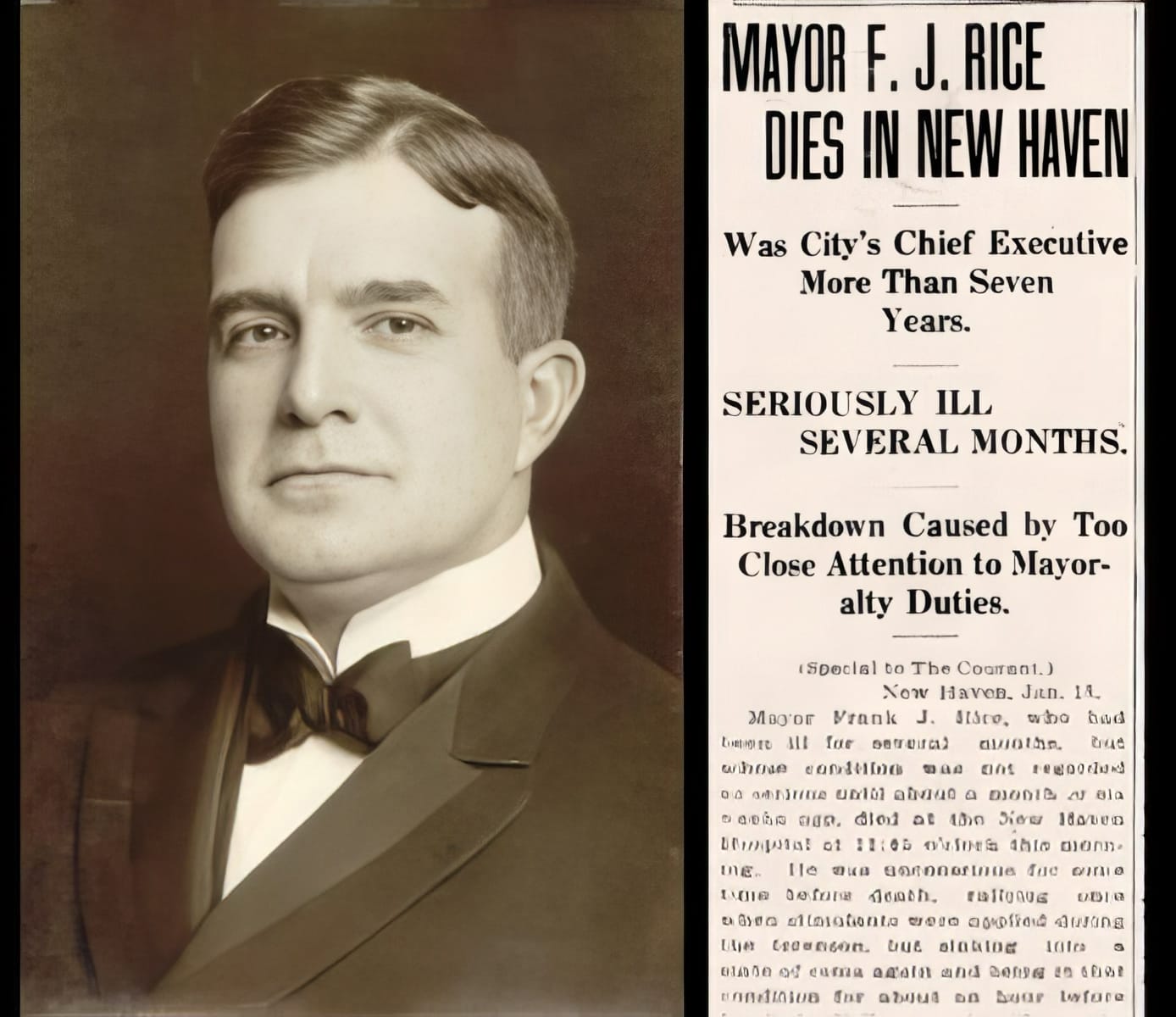
According to his obituary, Frank was a member of numerous fraternal organizations, including the Masons, Odd Fellows, Elks, and Knights of Pythias. He was also a founding member of the Boy Scouts of America in 1910, with its headquarters in New Haven at the time. Frank married Charlotte Almire Watrous (1872–1961), a native of Clinton, Connecticut, and they had two sons, Russell Lemual (1894–1939) and Mancel Watrous (1897–1932). Frank passed away in 1917, midway through his fourth term as mayor. In his honor, a baseball field named Rice Field was established in New Haven, serving as a venue for sports and community events to this day.
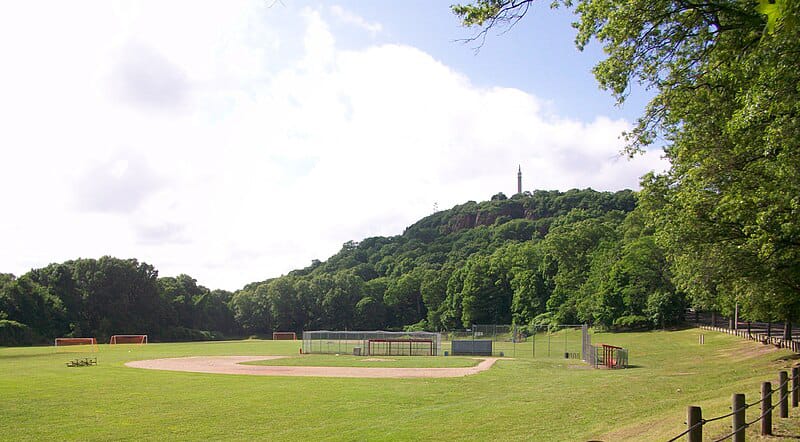
This juxtaposition of honoring Frank's service to the city with the naming of Rice Field situated below the New Haven Soldiers and Sailors Monument atop East Rock, echoes the legacy of service and sacrifice embodied by Frank and Frederick’s father, Jesse Hull Rice (1843–1915). Jesse served in the Union Army during the Civil War as a member of Company A of the 20th Connecticut Volunteers, enduring immense hardships, including being reported missing in action at the Battle of Chancellorsville in 1863. Just days before the war’s end in 1865, he sustained a gunshot wound at the Battle of Bentonville, resulting in the amputation of his right arm.
Despite receiving an artificial arm, complications from his injury caused chronic pain and health issues. Returning to Cheshire, CT, he farmed but later had to sell his land due to declining health. In his later years, he served as Connecticut's state Senate doorkeeper. Jesse married Caroline Holbrook (1849-1931) shortly after the war in 1868, and the couple had four children, including Frank and Frederick. Jesse received increasing pension payments until his death in 1915. The story of his injury is recounted in detail along with more biographical information to illuminate his remarkable life, in an essay on the National Archives website, Beneath His Shirt Sleeves: Evidence Of Injury, Part II.
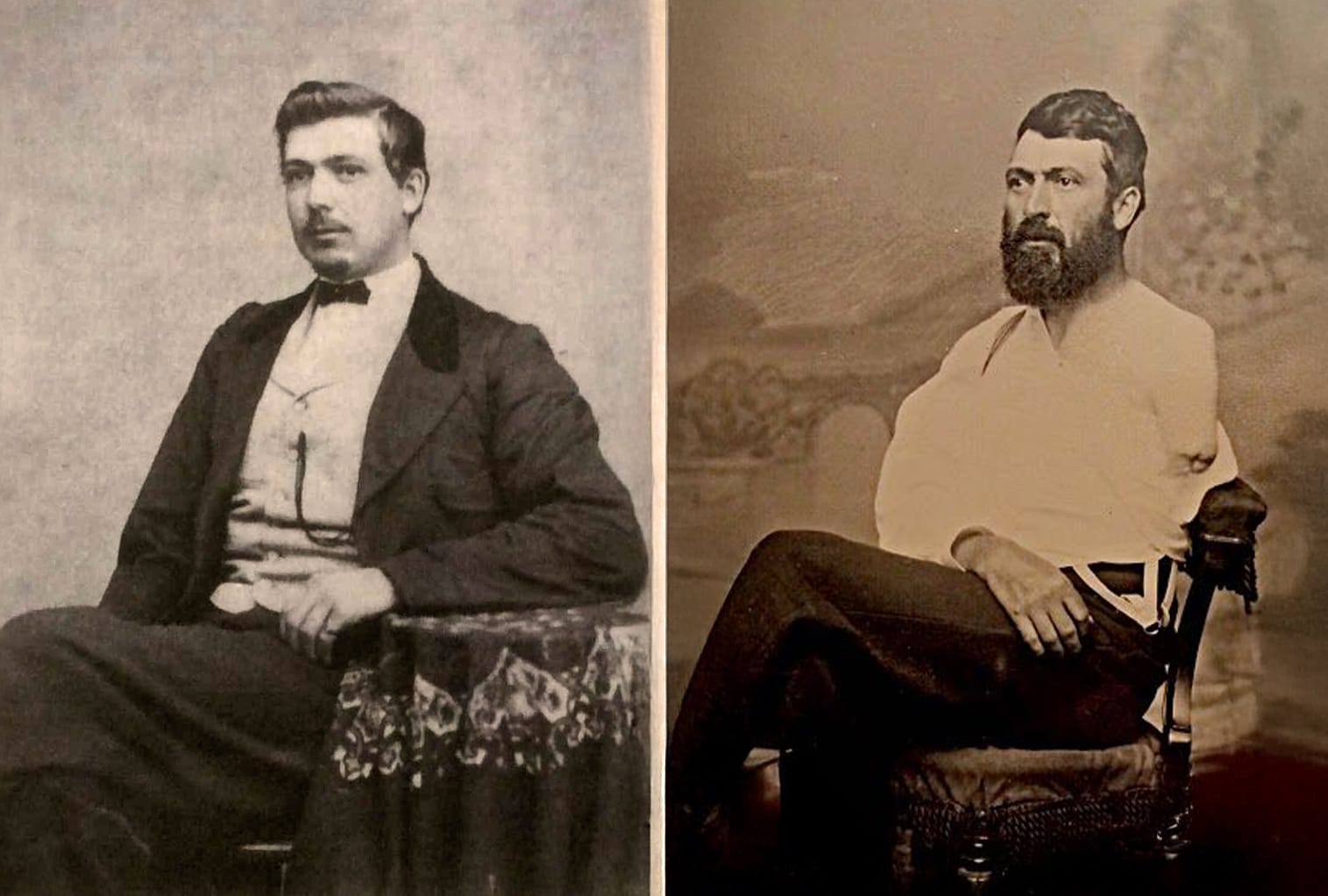
The story of the Rice family connected to my house here in Woodbridge is just one example of what we can piece together from the fragments of records left behind by those who have called Woodbridge home through the centuries. Each piece of information — whether found in land records, old photographs, or the recollections of contemporaries captured in newspaper articles — offers a glimpse into the lives that came before us and the community they helped build.
As we continue to uncover and share these stories, we can preserve the essence of Woodbridge’s past for future generations. So whether you're researching your own home, tracing your family’s roots, or simply curious about the history surrounding us, I encourage you to explore the available resources and embark on your own journey of discovery. With so many tales tucked away in old homes and winding through the roads of our town, there’s no telling what stories are waiting to be discovered.